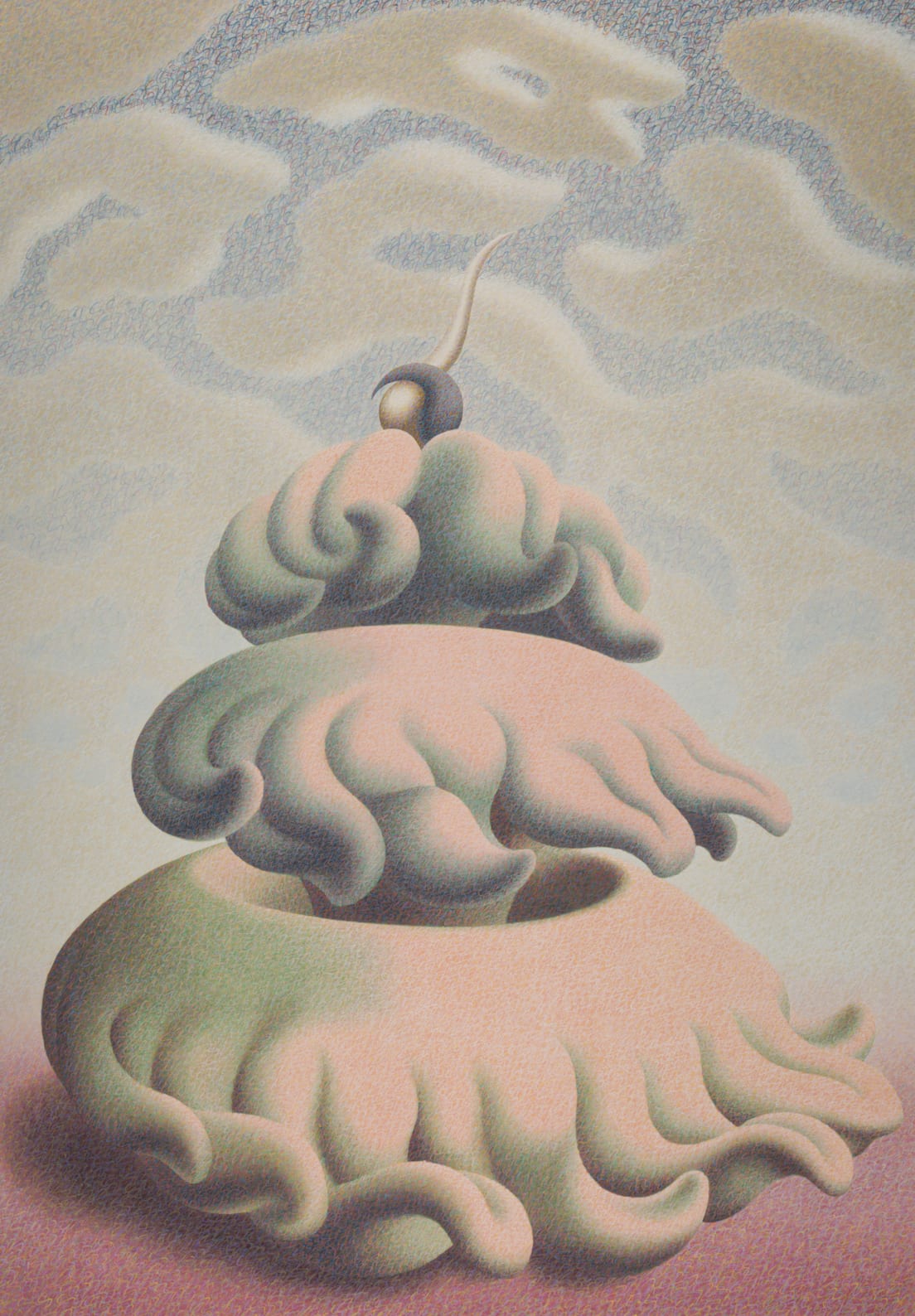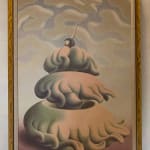Henry Orlik b. 1947
Framed: H 98 cm. x W. 70 cm., H. 38½ in. x W. 27½ in.
Further images
This exuberant painting appears at first glance to be a stylised dancing figure, wearing a whirling, three-tiered dress. The top tier suggests the glamorous clothing of a 1920s or 1930s starlet; maybe she wears a luxurious fur jacket and atop her head, she has a sleek, stylish bob and wears a striking pointed avant garde hat. The lower two tiers of her clothing swing out like a belly-dancers’ tiered skirts or the glamorous full-skirts of a bygone age. Her headdress is reminiscent of a Thai dancer’s headdress which is also an antenna. Energetic movement is suggested by the ‘flicking’ out of the bottom sections of the lower two tiers; the shapes of the edges of the ‘skirts’ morph suggestively into buttocks with legs kicking out and dancing and then they morph again into the shape of wagging tongues. Thick, stylised, dense clouds lie overhead.
The cloud-like structure of the ‘dress’, particularly in the middle and upper tiers, suggest dense clouds which erupt from the bottom section. In this case they become the aftermath of an explosion, and in particular, the mushroom clouds created from a nuclear explosion. The title, The Lying Plant, then becomes a nuclear plant and the beautiful, subtle colouring, grey cloud tinged with orange-pink, becomes the colour of the explosion.
Perhaps the ‘lying’ of the title refers to the first atomic bomb test in New Mexico on 16 July 1945, when a plutonium implosion device was tested at a site on the plains of the Alamogordo Bombing Range, known as the Jornada del Muerto. The code name for the test was ‘Trinity.’ People witnessed the explosion from 200 miles away and it was said to light ‘up the sky like the sun’. After the test, the Air Base issued a press release that stated, ‘A remotely located ammunition magazine containing a considerable amount of high explosives and pyrotechnics exploded, but there was no loss of life or limb to anyone.’ The actual cause of the blast was not disclosed until after the U.S. bombing of Hiroshima on 6 August 1945. The success of the Trinity test meant an atomic bomb could be used by the U.S. military and it marked the start of the Atomic Age.














